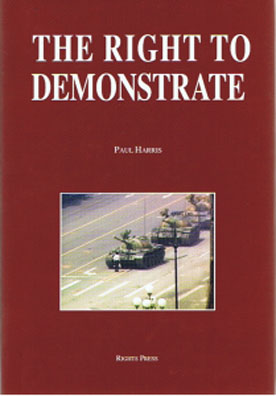
This unique book traces the history of peaceful demonstrations from their origins to their present worldwide use through the stories of the most famous demonstrations and demonstrators.
The peaceful demonstration gives a voice to the voiceless. Today, demonstrations are everyday events in many countries and the right of citizens to hold peaceful protests and marches is widely recognized. In the age in which the media is controlled by a small number of individuals, in those places where the right to demonstrate is treasured, all citizens have the power to draw issues which concern them to the attention of governments and their fellow citizens by the simple act of marching in the streets. However, it is only just 200 years since the idea of peaceful demonstrations first developed.
Barrister and human rights expert Paul Harris traces the right to hold demonstrations to the ancient right to petition the English crown. He then describes how in eighteenth century England rioting was gradually replaced by peaceful demonstrations, leading eventually to parliamentary democracy. He then looks at the spread of peaceful demonstrations around the world with successful eight-hour day demonstrations in Australia and workers' May Day marches. He then describes how, in the twentieth century, the right to hold a demonstrations was slowly recognised as a right in itself.
The power of peaceful demonstrations to bring about great changes to the lives of millions is illustrated by the stories of Mahatma Gandhi deliberately but peacefully breaking the law during his campaign for Indian independence and Martin Luther King using demonstrations to break down segregation laws.
This comprehensive examination of the subject also considers symbolic demonstrations like flag-burning; environmental demonstrations by Greenpeace and other organizations; the tension between demonstrations and the rights and freedoms of others; "People Power" in the Philippines; and the Tian An Men Square massacre in Beijing in 1989. Its conclusion is that peaceful demonstrations are a force for good that should be everyone's right in every country.
This book will interest and inspire anyone who has ever wished to bring about change by peaceful means.